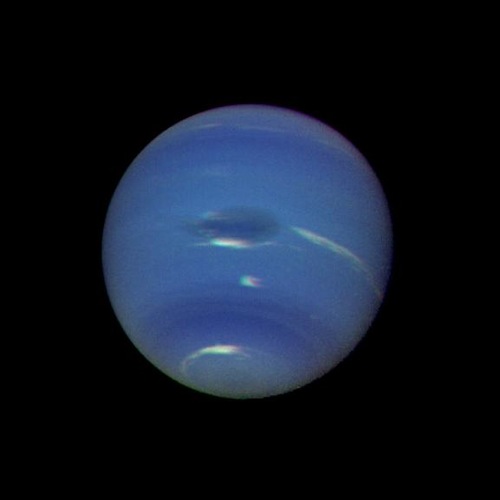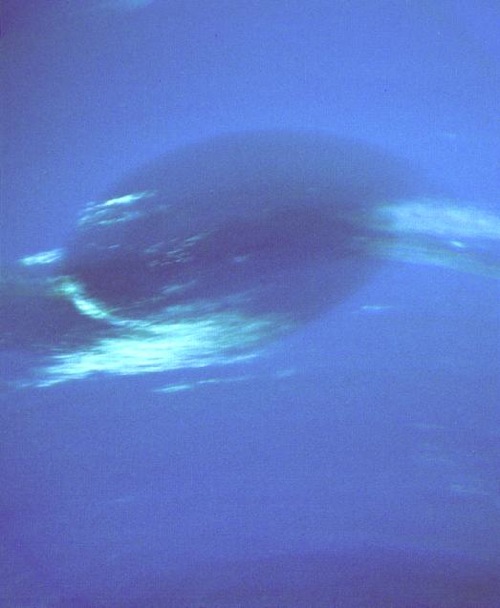Weather Gallery:
Neptune

Voyager 2 observed Neptune in great detail, revealing a blue-green atmosphere and some intriguing features. The Great Dark Spot (GDS) seen at the centre is about 13,000 km by 6,600 km in size, as large along its longer dimension as the entire Earth. The bright, wispy cirrus-type clouds seen hovering in the vicinity of the GDS are higher in altitude than the dark material of unknown origin which defines its boundaries. The bright cloud at the southern (lower) edge of the GDS measures about 1,000 km in its north-south extent. The small, bright cloud below the GDS, nicknamed the 'scooter,' rotates faster than the GDS, gaining about 30 degrees eastward (toward the right) in longitude every rotation. Bright streaks of cloud at the latitude of the GDS, the small clouds overlying it, and a dimly visible dark protrusion at its western end are examples of dynamic weather patterns on Neptune, which can change significantly on time scales of one rotation (about 18 hours). The GDS was not visible when Hubble looked at Neptune two years ago. Image: NASA/JPL.

Using powerful ground-and space-based telescopes, scientists have obtained a look at some of the wildest, weirdest weather in the Solar System. Discrete cloud features and zonal bands of weather are visible in these images, and seem to behave like the equatorial regions of the Earth, where tropical heat provides abundant energy to make clouds. In addition, these images show the appearance of a new spot. But instead of growing to a large-scale storm like the GDS, the new spot appears to be trapped at a fixed latitude and may be declining in intensity. Image: NASA/JPL/STScI.

Close up view of the Great Dark Spot as seen by Voyager 2, which has since disappeared. The image shows feathery white clouds that overlie the boundary of the dark and light blue regions. The pinwheel structure of both the dark boundary and the white cirrus suggest a storm system rotating counterclockwise. Periodic small scale patterns in the white cloud, possibly waves, are short lived and do not persist from one Neptunian rotation to the next. Image: NASA/JPL.
 
« Previous Next »
|

